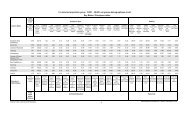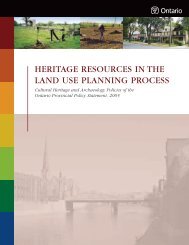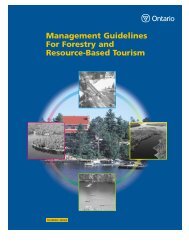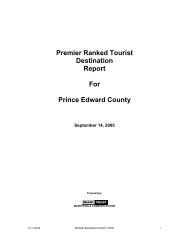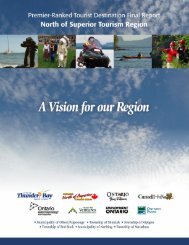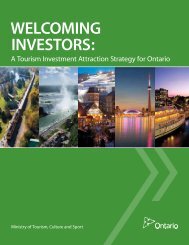Factors Influencing Visitor's Choices of Urban Destinations in North ...
Factors Influencing Visitor's Choices of Urban Destinations in North ...
Factors Influencing Visitor's Choices of Urban Destinations in North ...
Create successful ePaper yourself
Turn your PDF publications into a flip-book with our unique Google optimized e-Paper software.
• Although the elasticity values are different among cities because the start<strong>in</strong>gvalues for the number <strong>of</strong> attractions and for the number <strong>of</strong> visitors are different,keep <strong>in</strong> m<strong>in</strong>d that the actual visitor impact will be the same. This result derivesfrom the cross-sectional nature <strong>of</strong> the analysis, which yields the same impact for agiven change <strong>in</strong> the base attraction count for all cities. For example, a 1%<strong>in</strong>crease <strong>in</strong> the number <strong>of</strong> new amusement park (Q3) <strong>in</strong> Ottawa would yield a0.94% to 1.48% <strong>in</strong>crease <strong>in</strong> visitations to Ottawa depend<strong>in</strong>g on what model isused. The percent <strong>in</strong>crease <strong>in</strong> visitations would result <strong>in</strong> an <strong>in</strong>crease <strong>of</strong> 4.5 to 6.7total visitors, depend<strong>in</strong>g on the model used. For Toronto, the 1% <strong>in</strong>crease wouldyield a 0.33% to 0.52% <strong>in</strong>crease <strong>in</strong> visitations, and the impact on the total number<strong>of</strong> visitors would be <strong>in</strong> the same range <strong>of</strong> 4.5 to 6.7 visitors.Market<strong>in</strong>g Budgets ElasticitiesThe data for market<strong>in</strong>g budgets was available for only 33 <strong>North</strong> American cities <strong>in</strong>stead<strong>of</strong> 50. Model 5C <strong>in</strong>cludes an estimated coefficient for the market<strong>in</strong>g budgets. Us<strong>in</strong>gformula (7) for the elasticity calculation, <strong>in</strong>dividual elasticities can be estimated for all 33cities.Elasticity city = β*(MB 0 / V 0 ) (7)Where:MB 0 - a current amount spent on market<strong>in</strong>g <strong>in</strong> a particular city;V 0 - the current number <strong>of</strong> visits <strong>in</strong> a particular city;β - the estimated coefficient from the model equation.If the market<strong>in</strong>g budget <strong>in</strong> Atlanta <strong>in</strong>creases by 1%, the number <strong>of</strong> visits to Atlanta will<strong>in</strong>crease by 0.08%. It is worthwhile to note that Chicago and Seattle would have thelowest response to the <strong>in</strong>crease <strong>in</strong> the exist<strong>in</strong>g market<strong>in</strong>g budgets, while Las Vegas andMontreal would benefit the most from additional spend<strong>in</strong>g on market<strong>in</strong>g. One <strong>of</strong> thereasons for such a low response <strong>in</strong> both Chicago and Seattle is perhaps that these citiesalready have a good return on their current market<strong>in</strong>g budgets (a high ratio <strong>of</strong> V 0 /MB 0 )and thus will have a lower response from <strong>in</strong>creas<strong>in</strong>g market<strong>in</strong>g budgets relative to othercities.32


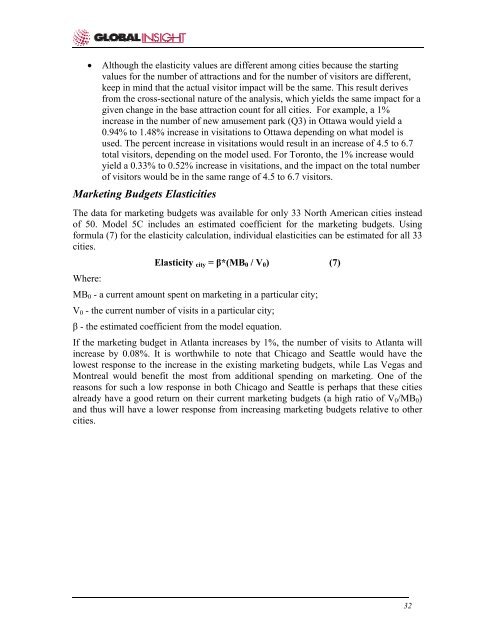
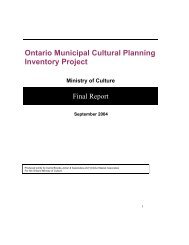
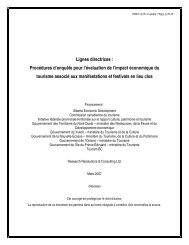
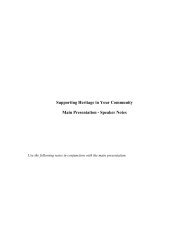
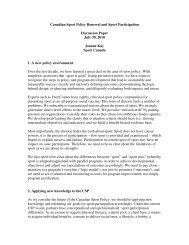
![THIS AGREEMENT made this [date], between [name of owner] (the ...](https://img.yumpu.com/49827605/1/158x260/this-agreement-made-this-date-between-name-of-owner-the-.jpg?quality=85)

